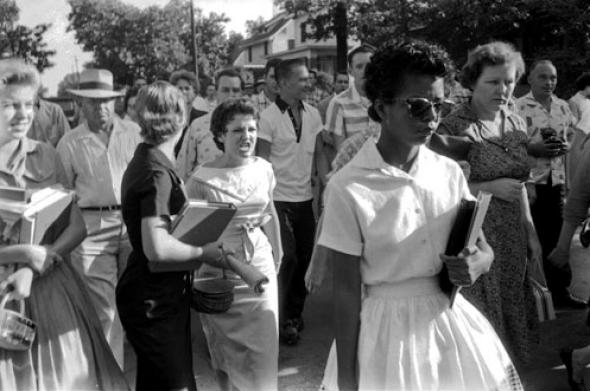Desegregation
Desegregation did not happen overnight. In fact, it took years for some of the highly resistant states to get on board, and even then some had to be brought on kicking and screaming. Before the Court ever got involved with school integration, desegregation became a matter of executive focus. The wheels were put in motion by the president. In 1948, President Harry Truman issued an executive order to integrate the armed forces after WWII. After the three years if took for the army to carry out this order, they ultimately found that the earth still rotated and their weapons still worked.
Schools are what we tend to think of when we hear the word segregation. And it was schools that the Court spent a fair amount of time discussing in its opinions on desegregation. But the Court had time to issue opinions on other matters as well. For instance, the Court defended Congress in its ability to draft legislation that allowed blacks to integrate with whites in the area of employment. The Court also supported Congress's prevention of racial discrimination in facilities like restaurants. The Court even went so far as to integrate love, and ruled that states could no longer prohibit interracial relationships. The importance of the Supreme Court's willingness to uphold civil rights for blacks cannot be denied; this was not the same court that decided Plessy v. Ferguson some 70 years before.

Notable Supreme Court Cases:
- Brown v. Bd. of Education of Topeka, 347 U.S. 483 (1954) - this was the seminal case in which the Court declared that states could no longer maintain or establish laws allowing separate schools for black and white students. This was the beginning of the end of state-sponsored segregation.
- Heart of Atlanta Motel, Inc. v. United States, 379 U.S. 241 (1964) - this case held that Congress could use its power to force private businesses to abide by the Civil Rights Act of 1964.
- Katzenbach v. McClung, 379 U.S. 294 (1964) - in this case, the Court held that Congress acted within its power under the Commerce Clause of the Constitution in forbidding racial discrimination in restaurants as this was a burden to interstate commerce.
- Loving v. Virginia, 388 U.S. 1 (1967) - this landmark case invalidated all laws prohibiting interracial marriage.
Selected Library Resources:
- George W. Noblit, ed., School Desegregation: Oral Histories Toward Understanding the Effects of White Domination, available as an ebook
- Richard C. Cortner, Civil Rights and Public Accommodations: The Heart of Atlanta Motel and McClung Cases, KF224.H43 C67 2001
- Kevin Stainback and Donald Tomaskovic-Devey, Documenting Desegregation: Racial and Gender Segregation in Private Sector Employment since the Civil Rights Act, available as an ebook
- Peter Wallenstein, Race, Sex, and the Freedom to Marry: Loving v. Virginia, KF224.L68 W35 2014
- James W. Endersby and William T. Horner, Lloyd Gaines and the Fight to End Segregation, KF4757 .E53 2016
- Gale Archives Unbound Collections (available through Howard Libraries):